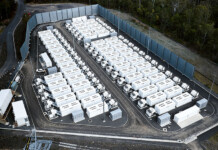Marinus Link Pty Ltd (MLPL) has selected a joint venture of DT Infrastructure and Samsung C&T Corporation (TasVic Greenlink) as the preferred bidder in the project’s major civils and construction tender.
The balance of works contract is the final of three major contracts, and the selection of the preferred bidder marks a significant next step towards constructing the landmark renewable energy infrastructure project.
Related article: Marinus Link ticks FID and federal enviro approval
The contract, currently in final negotiations with TasVic Greenlink, will cover the construction of converter stations in Heybridge and Hazelwood, the installation of equipment and the land cable civil works, which spans 90km across Gippsland.
MLPL CEO Stephanie McGregor said, “The successful tenderer will need strong local business capability to deliver on this massive construction campaign, and we’ve set targets to incentivise this,” McGregor said.
“TasVic Greenlink is keen to engage with potential subcontractors and suppliers during this next stage of the tender and into construction,” she said.
“In February, we invited local businesses to connect with our initial shortlisted bidders in Burnie, Morwell and Leongatha, and nearly 600 people turned up.”
“We’ve already passed on the details of over 500 subcontractors and suppliers who registered on the Industry Capability Network gateway previously.”
“With Marinus Link in place, Tasmania and Victoria will share much more electricity, pairing Victoria’s wind and solar with Tasmania’s flexible hydropower system and geographically diverse wind. This is a powerful synergy that strengthens the grid for both states,” McGregor said.
Related article: Marinus Link finance complete with record CEFC investment
“The project doesn’t just enable more electricity to flow—it also promotes investment in new clean energy projects and industry, in both Tasmania and Victoria.”
Construction is expected to commence in 2026, subject to final environmental and regulatory approvals. Stage 1 is scheduled for completion by 2030.







